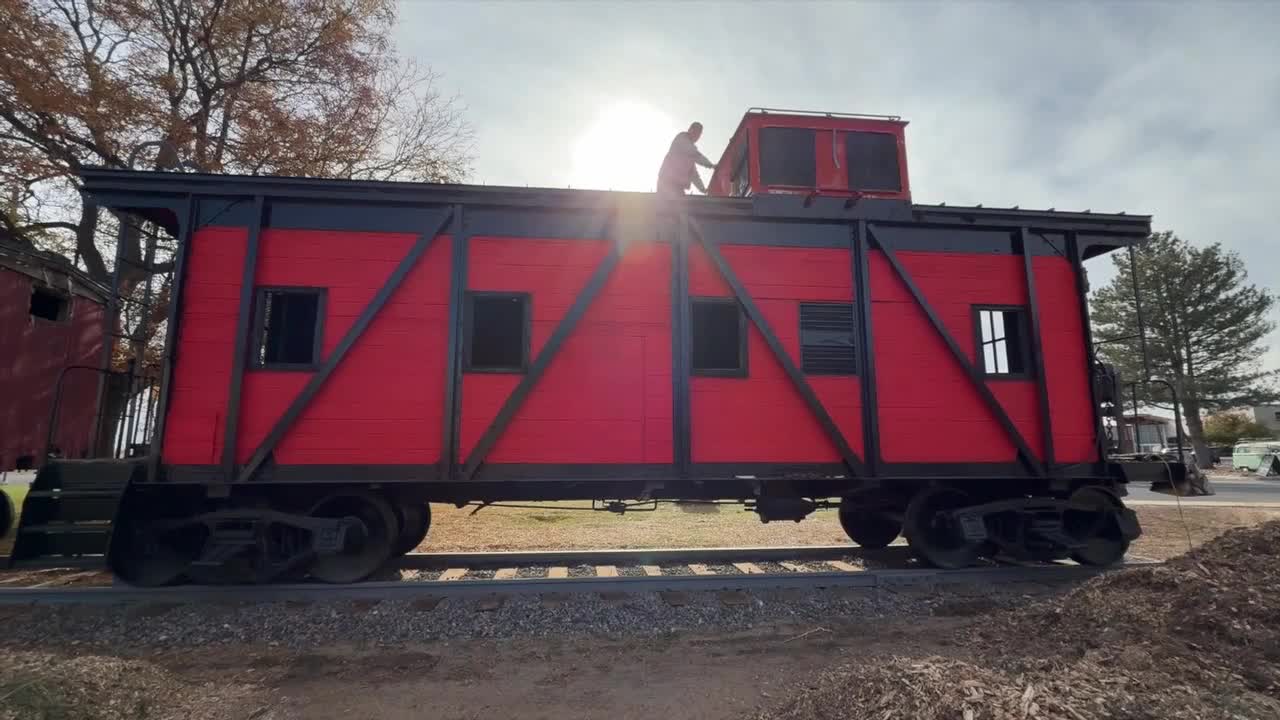LOUISVILLE, Colo. — Every morning, Travis Ramos walks into the past and saves it.
He works in Louisville restoring vintage Volkswagen buses built between 1968 and 1979. You could say he lives for the past. It’s not a bus-sized passion — it’s more caboose-sized.
"This is it," he said as he walked across the street to a piece of land with a vintage caboose and boxcar on the corner of Pine Street and Courtesy Road.

For five years, this was Travis’ vision. He put thousands of hours into restoring the 1913 caboose, finding a Colorado and Southern boxcar, laying track in the exact spot where the railway rolled through town a century ago — all to welcome visitors to the gateway to Louisville.
In 2020, Denver7 shared the story of his goal to protect the Louisville Caboose, which was a piece of local history he believed was worth saving.
"Our town is important to us," Ramos said in 2020. "And not losing that history is important, because I feel like you see it over and over. I grew up in a small town in Oklahoma, and you see big business come in, box stores, whatever it might be — and you kind of see a small town die."
Watch Denver7's 2020 report on the passion behind saving the historic caboose in the video below.
But now, after five years of dreaming and sweating and hoping, Ramos is calling it quits.
He just put the whole thing up for sale.
Its website now reads: "As much as we wish it were different, our family can no longer continue The Railyard project; we're looking to sell the property to someone who wants to shape the East Gateway to downtown Louisville with intention and heart."
"When the writing started to be on the wall that we likely couldn’t carry this project forward, I went through all the emotions, right? Anger and frustration, grief and all those things, trying to process five years of working toward this goal," Ramos told Denver7. "We’re not making money on this — this was never a thing to make money — trying to bring something beautiful to our community. Seeing that just go away for reasons out of my control — yeah, it's hard.”

Travis thought that they really built momentum with the community and with the city government. It seemed everybody wanted to see this project to the goal line. But he said the goal posts kept shifting.
He has spent $289,000 on land, new roofs for the caboose, grading analyses, photo metric analyses — $8,000 here and there. He said they were hemorrhaging money that they just didn’t have.
What would the miracle look like? Travis said honestly it would take someone with the same vision and a lot of money. He said he knows that in the most likely scenario, a developer will buy it, the train cars will disappear, and condos will go up.

“I hesitate to think about what the miracle would be because I have to think of it through the lens of taking care of my family and so the miracle for us is being financially whole," he said. "We just have to make that happen, but if I can wave a magic wand and say we are financially whole on this project, then the miracle would be someone, or a group of people or crowdfund, would say, 'We want this. We’ll put up our money or time to keep it here. It deserves to be here.'"








